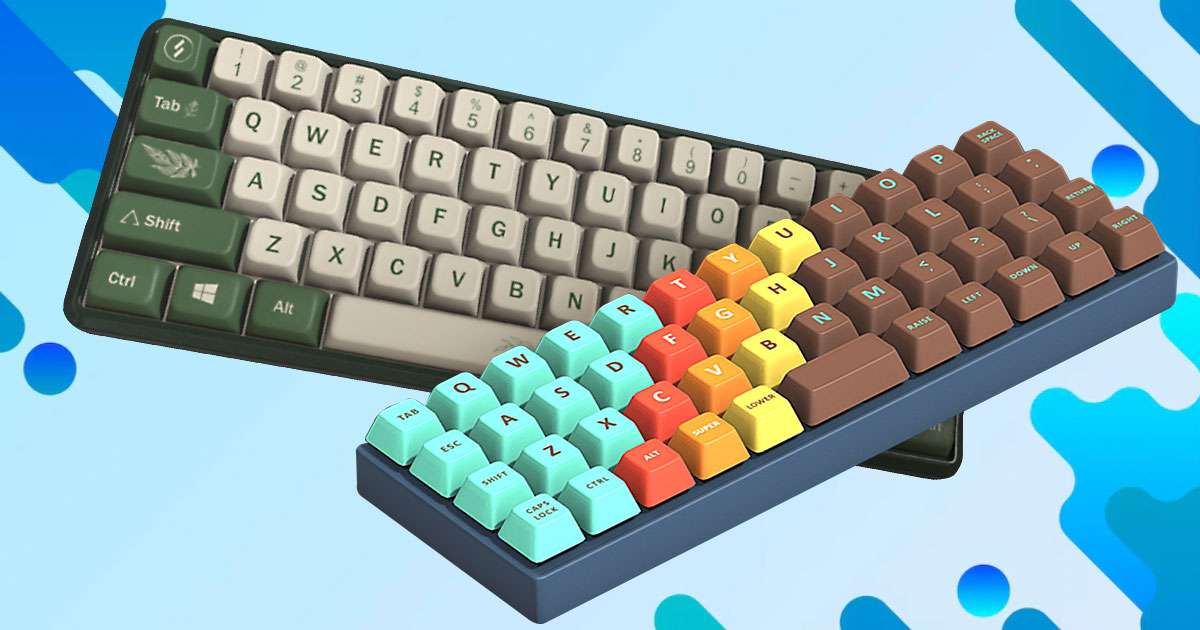The Intriguing Reasons Behind Non-Alphabetical Keyboard Layouts

Typing on keyboards has changed the way we write in a big way. Gone are the days when we had to keep writing with pens on paper for hours. A study by Applied Ergonomics Journal found that people might find it a bit hard to get used to new keyboard layouts at first, but it doesn’t really affect how much work they get done after they’ve used it for a while.
Using keyboards has made us more productive and saved us a lot of time. Writing on paper can make your hands tired and mean you have to carry pens and pencils around, but typing on a computer makes it easy to fix mistakes, organize your work, and make everything look neat. The way letters are arranged on the keyboard helps make typing even better.
But this makes you wonder: why aren’t the keys in alphabetical order? Has it always been like this, and is there a reason alphabetical order might not be the best way after all?
The Creation of Keyboard Order
The keyboard layout that most of us use today didn’t start with computers but with the invention of the typewriter in the 19th century. The most common layout, known as QWERTY, gets its name from the first six letters on the top row of the keyboard.
Late 1800s: The story of keyboard layouts starts with the typewriter. Back then, Christopher Latham Sholes, who was a newspaper editor, came up with the first layout. It was almost alphabetical, but there was a big problem: typing too fast would jam the machine because letters that were next to each other got stuck.
1870s: To fix this, Sholes mixed up the letters to spread out the ones that were used together a lot. This new setup was called QWERTY, named after the first six letters on the top row. Sholes’ idea worked! Typewriters didn’t jam as much, and people could type faster.
Selling the Idea: Sholes sold his QWERTY design to the Remington Company, which made the first typewriters using it. Because these typewriters were so popular, the QWERTY layout became the standard way keyboards were set up.
Different Places, Different Needs: Not everyone in the world speaks English, so some countries needed their own versions of the keyboard. That’s why there are layouts like AZERTY for French speakers and QWERTZ for German speakers. These changes help people type in their own languages more easily.
Today: Even though we’ve moved from typewriters to computers, the QWERTY layout is still around. It’s what most of us learn to type on. There have been attempts to make new layouts that might be better or faster, like Dvorak or Colemak, but QWERTY is so well-known and widely used that it’s hard to change.
Why Keyboards Aren’t in Alphabetical Order
You might think putting keyboard letters in alphabetical order would make sense, but there are good reasons why they’re mixed up:
- More Mistakes: If letters that we often use together were right next to each other, we’d probably make a lot more typos. Imagine typing “the” and accidentally pressing “g” instead of “h” because they’re all crammed together.
- Slower Typing: Typing fast is all about balance—using both hands equally. An alphabetical keyboard wouldn’t spread the work between our hands properly, so we’d end up typing a lot slower.
- Stuck Keys: Back in the days of old typewriters, hitting keys that were too close to each other too fast could jam the machine. That’s a big reason why the letters got all mixed up—to keep everything running smoothly.
The Advantages of the Current Keyboard Layout
The QWERTY keyboard layout, despite its initial learning curve, offers several significant benefits compared to an alphabetical arrangement:
Balanced Use of Hands
The design encourages even use of both hands, which can lead to faster typing once you’re used to it. It’s crafted to evenly spread out the typing effort, helping to prevent fatigue and increase typing speed.
Fewer Typing Mistakes
By spacing out letters that often go together, it’s less likely you’ll hit the wrong key by accident. This smart setup helps cut down on errors, making for more accurate typing.
Improved Typing Speed
The placement of keys is carefully chosen based on how frequently each letter is used, making it easier to type quickly once you get the hang of the layout. This results in your fingers moving less distance overall, which speeds up typing.
Avoidance of Old Mechanical Problems
Though it’s designed with typewriters in mind to prevent keys from jamming, this historical detail highlights the layout’s purposeful engineering, even if it’s not a concern for modern digital keyboards.
Ergonomic Benefits
Originally meant to stop typewriter keys from sticking, the layout also ends up distributing the typing load between both hands. This can lessen strain during long typing periods, though its effectiveness may vary from person to person.
Why Being Curious Helps Us Learn
Knowing why keyboards aren’t in A to Z order isn’t just a fun fact—it shows how asking questions helps us learn more. This kind of knowledge is great to have, especially when kids or anyone new to typing wonders why the keys look so mixed up. Being able to explain it to them not only answers their question but also shows them that it’s good to be curious. Asking why things are the way they are is a big part of learning. So, every time we find out something new and share it with others, we’re helping keep that curiosity alive and kicking.

